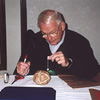This picture shows that there are three small regions in which the particles are trapped. These regions are the plasmaspheres.
Click on image for full size
T.S. Huang
The Plasmaspheres of Neptune
Neptune has three tiny plasmaspheres. The rings of Neptune sweep away much of the particles in the area.
Particles enter the plasmasphere from the atmosphere as well as the magnetotail. Mathematical theory suggests that particles leave the plasmasphere by being swept directly into the atmosphere.
You might also be interested in:
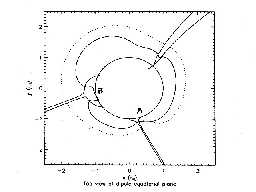
Neptune has three tiny plasmaspheres. The rings of Neptune sweep away much of the particles in the area. Particles enter the plasmasphere from the atmosphere as well as the magnetotail. Mathematical theory
...more
One of the many cloud patterns of Neptune is the "scooter" which was discovered by Voyager in 1989. In this image, the Great Dark Spot is found in the upper left of the image, and just below the Spot is
...more
The position of the planets in the solar nebula greatly affected their 1. size and 2. composition. This is because of the effect of how cold it was in the nebula. 1. The nebula was a lot warmer close to
...more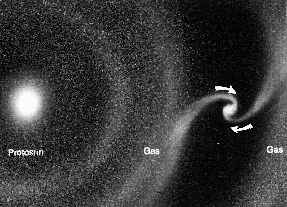
As shown in this picture, while they were forming in the solar nebula, the nuclei of the protoplanets drew material to themselves from the cloud of gas and dust around them. The bigger a protoplanets was
...more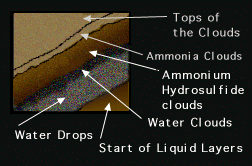
There is no surface to the giant planets, only a gradual transition from the atmosphere, as depicted in this drawing. Therefore the giant planets do not have strict layers, as the terrestrial planets do.
...more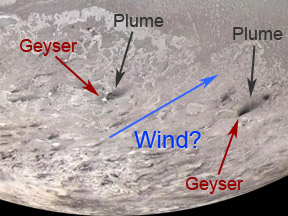
Triton, by far the largest moon of Neptune, is slightly smaller than Earth's Moon. Triton has the coldest surface temperatures in our Solar System. Surprisingly, this frigid moon has an atmosphere, albeit
...more
Image processing can produce a view such as one might see if you were present on the surface of Triton.
...more



